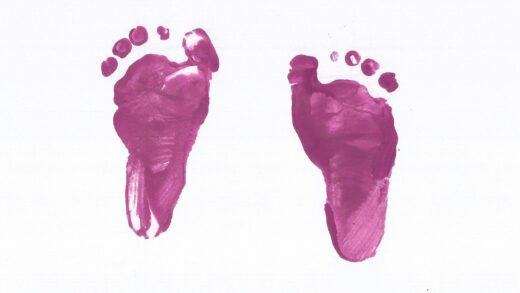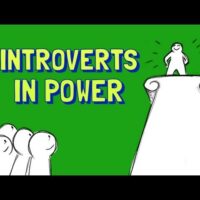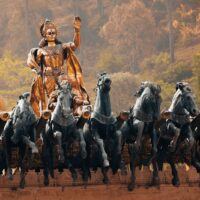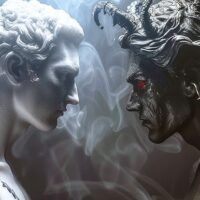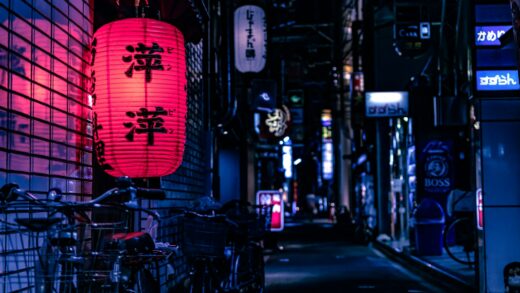The Rise and Fall of Roch Thériault’s Ant Hill Kids Cult
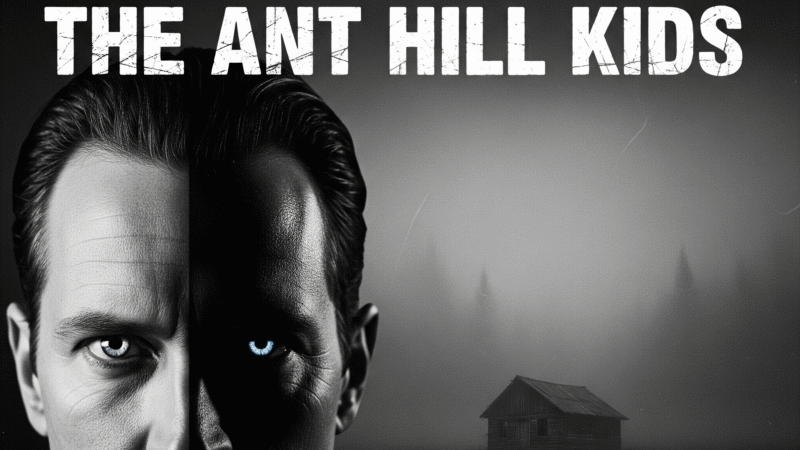
Of all the stories of human cruelty that stain the pages of history, some are so profoundly dark, so saturated with a depravity that defies comprehension, that they force us to question the very nature of humanity. We have heard of monsters like Josef Fritzl, who imprisoned his own family in a dungeon, and Peter Kürten, the “Vampire of Düsseldorf,” whose crimes terrorized a nation. Their stories often feel like the absolute nadir of human evil, the furthest a person can fall into a chasm of monstrosity.
But then, a name emerges from the shadows of history that makes even those horrors seem comprehensible by comparison. It is a name that represents a story so disgusting, so terrifying, and so relentlessly horrifying that it seems to exist on a different plane of evil altogether. This is a story that, with every new detail, plunges deeper into an abyss of torment. Just when you think it cannot possibly get worse, it does.
This is the story of Roch Thériault, a man whose charismatic poison allowed him to forge a cult, a miniature kingdom built on manipulation and fear. He was a leader who promised salvation but delivered a hell on Earth, inflicting unimaginable physical, emotional, and sexual abuse upon his followers. The women in his thrall vied for his attention, and the children born into his world knew nothing but torture. This is not merely a true crime story; it is an exploration of the absolute disintegration of the human soul.
The details that follow are graphic and deeply disturbing. They include accounts of torture, mutilation, and murder. Reader discretion is strongly advised.
Who Was Roch Thériault Before He Became a Cult Leader?
Before he was the self-proclaimed prophet “Moïse” (Moses), Roch Thériault was a man of unremarkable origins, whose early life offered only faint glimmers of the monster he would become. Born in Quebec, Canada, Roch was described as intelligent and bright in his youth. He progressed to the seventh grade, a reasonable level of education for his time and circumstances, but financial hardship and other personal issues compelled him to leave school behind.
It was after leaving the structured environment of school that Thériault found a new, more malleable text to shape his worldview: the Bible. He began to study it intently, not with the humility of a seeker, but with the ambition of a future architect of belief systems. Years later, in conversations with police, Thériault would attempt to construct a sympathetic backstory for himself. He claimed his childhood home was a place of torment, where his father relentlessly abused him and his six siblings. He painted a picture of a victim, a boy forged in violence, perhaps as a way to explain or excuse the violence he would later perpetrate. However, when investigators delved into these claims, they found no evidence. Police records were clean, and neighbors who knew the family flatly denied any such abuse ever took place. The first construction of Roch Thériault’s mythology, it seems, was his own victimhood—a complete fabrication.
At the age of 20, he took a step toward a conventional life, marrying a woman named Francine Grenier. The couple moved to Montreal and had two sons, Roch Jr. and François. But normalcy was not in Thériault’s nature. A significant turning point came not from a spiritual crisis, but a physical one: he was diagnosed with ulcers. The condition itself made him irritable and aggressive, but it was the treatment that planted the most dangerous seeds in his mind. A botched surgery led to a prolonged and painful recovery, a period filled with medications, repeated tests, and constant interaction with the medical world. During this time, a morbid fascination took root. Thériault became enamored with the concepts of surgery, medicine, and human anatomy. He saw power in the ability to cut into a body, to diagnose, to treat—a power he would later usurp with catastrophic consequences.
His marriage to Francine began to fray. After returning to Thetford Mines, he used his work in woodworking as a pretext to travel frequently to Quebec City. It was there he met another woman, Gisèle, and began an affair. The allure of this new relationship was so strong that Thériault abandoned his job, a decision that sent his life spiraling into financial ruin. He lost his home, and shortly after, he lost his family when Francine divorced him. Freed from the constraints of marriage and responsibility, Thériault was now untethered, free to fully pursue Gisèle and the new path he was beginning to carve for himself. He moved in with her and, together, they joined the Seventh-day Adventist Church, an act that would prove to be the critical launching pad for his terrifying ascent to power.
How Did a Church Group Turn into a Dangerous Cult?
Roch Thériault’s journey from a charismatic churchgoer to an absolute tyrant began within the seemingly benign confines of the Seventh-day Adventist community. Possessing a natural, almost predatory charm, he quickly drew a small, devoted following. This group consisted mainly of late teenagers and young adults in their early twenties, a demographic ripe for influence, searching for purpose and belonging. The majority of them were female, drawn to his intense confidence and pseudo-spiritual rhetoric. Gisèle’s home became their unofficial headquarters, a place where Thériault could hold court and slowly tighten his grip.
The pivotal moment, the event that transformed his small clique into the seed of a full-blown cult, occurred in 1977. Thériault and his followers attended an Adventist retreat, where his magnetic personality attracted even more people to his orbit. He established an anti-smoking workshop, a clever front that lent him an air of legitimacy and righteous purpose. It was during this retreat, he would later claim, that he experienced a divine revelation.
According to his narrative, he was hiking alone on a mountain when a brilliant white light appeared in the sky. From this celestial radiance, he heard the voice of God. The message was clear: he, Roch Thériault, was a chosen messenger, and the ground upon which he stood was holy. This “vision” was the masterstroke of his manipulation. It elevated him from a mere group leader to a prophet, a direct conduit to the divine. This story became the foundational myth of his cult, a powerful tool to demand absolute faith and obedience. Anyone who questioned him was now questioning God himself.
His following, now convinced of his holy mandate, swelled. The anti-smoking club became a recruitment pool for his burgeoning cult. He handpicked a core group of about eight followers who were so devoted they agreed to live with him communally. They established what they called a “healthy living clinic,” founded on the principles Thériault preached: organic food, no smoking, no drinking. It was a noble-sounding enterprise, but its true purpose was to centralize his power and drain his followers of their resources.
Thériault’s charisma was a force of nature. He could look directly into someone’s eyes, speak with unwavering confidence about spiritual matters, and weave elaborate, nonsensical stories using a few heavy, important-sounding words. Newcomers to the clinic were mesmerized. They felt that in Roch, they had found a man of profound wisdom and that joining his cause was the best decision of their lives. The reality was that his speeches were hollow, a word salad of spiritual jargon designed to impress and disarm. But his self-assurance was so absolute that it created its own reality.
People were so thoroughly convinced that they began to liquidate their entire lives for him. They sold their assets, cashed in their life savings, and poured every last dollar into Thériault’s clinic. In one staggering example of his manipulative power, one female follower placed her own child into foster care. Her reasoning was that raising the child would cost money—money she believed would be better spent supporting Roch’s “divine” mission. This was the terrifying power of his control: he could sever the most fundamental human bond, that of a mother and child, with his words alone. The healthy living clinic was not a place of healing; it was the crucible where Roch Thériault forged his followers into tools for his own gratification, stripping them of their autonomy, their money, and their ability to think for themselves.
Why Were Roch Thériault’s Followers Called the Ant Hill Kids?
The “healthy living clinic” was merely a stepping stone. As Thériault’s paranoia and megalomania grew, so too did his need for absolute isolation. The prying eyes of society, the police attention drawn by the death of a leukemia patient he’d tried to “cure” with grape juice, and his expulsion from the very churches that had once given him a platform all of these were signs to Thériault. Not signs that he was wrong, but signs that he needed to tighten his control and escape scrutiny.
In 1978, leveraging his status as God’s messenger, he delivered his most terrifying prophecy yet. He announced to his followers that the world was going to end in 1979. An apocalypse was coming, a fiery cataclysm that would wipe out the wicked. But there was hope. A small group of holy people, chosen by him, would survive. The only path to salvation, he declared, was to abandon the doomed world and follow him to a remote, rural location where they would build a new society and ride out the destruction.
His manipulation was so total, his followers’ capacity for critical thought so eroded, that they believed him without question. The promise of survival at the hands of their messiah was all the motivation they needed. The group abandoned their lives and followed Thériault deep into the wilderness, to a mountain where they began to construct a new settlement from scratch. They set up tents, built rudimentary cabins, and hauled in furniture, preparing for the end of the world.
It was during this period of grueling labor that the cult received its infamous name. As his followers toiled relentlessly, working day and night to build his new kingdom, Thériault would stand aside, observing them with a mixture of amusement and contempt. He would laugh at their efforts, remarking derisively, “Look how they are working like ants.” The name stuck. From that point on, they were the Ant Hill Kids—a name that perfectly encapsulated his view of them: mindless, interchangeable workers existing only to serve his will.
Life on the mountain marked the complete abandonment of any pretense of “healthy living.” Thériault, the man who had built his initial following on anti-smoking and clean living principles, now drank heavily and smoked constantly. He had already established a harem, taking every female follower as his “wife” in sham ceremonies, but now the abuse escalated dramatically. He declared himself the reincarnation of Moses, reinforcing his divine authority. The followers, stripped of their identities, began to call him “Papa,” a title that blended paternal authority with godlike reverence. They were no longer individuals; they were his children, his ants, his property. The remote commune was not a sanctuary from the apocalypse; it was a prison without walls, a private torture chamber where Roch “Papa” Thériault was the only god, and his whims were the only law.
What Unspeakable Abuses Happened at the Ant Hill Kids Commune?
The isolation of the mountain commune allowed Roch Thériault’s darkest impulses to flourish without restraint. What began as psychological manipulation and financial exploitation devolved into a relentless campaign of sadistic torture that targeted every man, woman, and especially every child under his control. The title of “Papa” became a grotesque irony as he unleashed a level of cruelty that is difficult to comprehend.
The children, many of whom were his own offspring from his eight “wives,” bore the brunt of his most horrific acts. Having never known a world outside the commune, the constant torment was their only definition of normal. Thériault would single out a child, often at random, declare them possessed by the devil, and subject them to unimaginable abuse. These were not punishments for misbehavior; they were acts of pure sadism performed for his own gratification. He would hang children over open fires, their skin blistering from the heat. He would string them upside down from tree branches and command the other children to throw stones at them, forcing them to participate in the torture of their peers and siblings.
His depravity knew no bounds. He would urinate and defecate on his own children and wives, sometimes forcing them to clean him with their mouths. He would then gather a group, including the victim’s own mother, and lead a collective assault, beating the child senseless with belts and hammers. He would then force the mother to witness the aftermath, to see her child broken and suffering, drawing a perverse sense of power from her anguish. His methods were diabolically creative; he would pin a child to a tree by driving nails through their clothing and leave them there for hours. He would methodically pull out every single hair from a follower’s head as a form of punishment.
His ideology regarding women was brutally misogynistic. He believed their sole purpose was to obey men—specifically, him. He would summon all his wives to his bed at once, not for affection, but to have them massage him and fight with each other for his attention. He reveled in their jealousy, seeing it as a testament to his own superiority. All of his sexual activities were performed openly, in front of the children, shattering any concept of privacy or decency.
Any talk of leaving the cult was met with immediate, savage violence. The punishments were designed to inflict maximum pain and terror. He forced followers to take sledgehammers and break their own legs. He made them sit on burning stoves, searing their flesh. In one of the most twisted forms of control, he would command one cult member to take a gun and shoot another in the shoulder, turning them into instruments of his will and breaking the bonds between them.
A pregnant woman, suffering from the increased hunger of her condition, made the “mistake” of eating a few extra pancakes. When Thériault found out, he broke her ribs. He then ordered her husband to teach her a lesson by cutting off her finger. When the husband hesitated, Thériault taunted him, saying, “If you want to be a man, you have to learn how to teach your woman a lesson.” He further controlled their lives by forbidding any man and woman from speaking or having sex unless he was physically present to watch. He controlled every aspect of their existence.
To maintain his divine facade, he would stage theatrical conversations with God, screaming to the sky, “God, don’t make me do this!” This performance convinced his followers that the torture they endured was not his will, but a divine commandment. They had been so thoroughly brainwashed that they truly believed their tormentor was a messenger of God, and their suffering was a holy trial. The Ant Hill Kids commune was not just a place of abuse; it was a psychological laboratory where Thériault dissected the human spirit, piece by painful piece.
What Was the Horrific “Surgery” Roch Thériault Performed?
The year 1979 came and went with no apocalypse. The world did not end. For any other cult leader, this failed prophecy would have been a devastating blow to their credibility. But Roch Thériault’s control was so absolute that he simply brushed it aside with a cunning explanation: there was a difference between “human time” and “God’s time.” The apocalypse was still coming; he just needed to recalculate. His followers, their critical thinking long since extinguished, accepted this without question.
It was around this time that Thériault’s fascination with medicine and surgery resurfaced in its most malevolent form. His belief in his own divine authority now extended to the realm of life and death, and he began to perform gruesome “operations” on his followers without any medical knowledge, training, or sanitation. The first fatal demonstration of his medical hubris involved a two-year-old toddler named Samuel.
Accounts of what led to the tragedy differ, but both versions are steeped in horror. The official story, told to police, was that a mentally unstable cult member named Guy had punched little Samuel in his private parts. The blow was so severe that the child began vomiting and was unable to urinate. Seeing the child in agony, Thériault announced that he would “fix him.” His solution was to perform an operation. In a filthy, unsterilized environment, using crude instruments, he cut into the small child’s body. The result was inevitable: Samuel died from the trauma and subsequent infection.
However, Thériault’s second wife, Gisèle, offered an even more disturbing account in a book she later wrote. She claimed the crisis began when Thériault decided, for reasons unknown, that Samuel needed to be circumcised. During the botched procedure, to stifle the child’s screams, a large amount of cotton soaked in alcohol was shoved into his mouth. According to Gisèle, Samuel did not die from the cutting itself, but from choking on the cotton and alcohol poisoning.
Regardless of which version is true, the outcome was the same: a child was dead because of Roch Thériault’s delusion and cruelty. To deflect blame, he declared that Guy was solely responsible for Samuel’s death. The punishment was decided: Guy would be castrated.
Cult members seized Guy and pinned him to a table. Thériault orchestrated the mutilation. They tied a plastic band tightly around Guy’s testicles to cut off circulation. Then, with a knife, they slowly and deliberately sliced them off. In a final act of barbarism, they “treated” the gaping wound by pouring salt water into it. Miraculously, Guy survived this ordeal. But the experience shattered whatever hold Thériault had left on him. As soon as he was able, Guy escaped the commune and went straight to the police, finally bringing the first official complaint against the horrors on the mountain. This act of bravery would lead to Thériault’s first, but tragically not his last, encounter with the law.
How Did Roch Thériault’s Most Extreme Torture Lead to His Downfall?
Guy’s testimony led to the arrest of Roch Thériault and several cult members for their roles in the death of Samuel and the castration. However, the justice system seemed ill-equipped to handle a manipulator of Thériault’s caliber. He was sentenced to just two years in prison for his crimes. In a tragic miscarriage of justice, his primary accuser, Guy, was deemed mentally unstable and sent back to a mental hospital, a move that effectively discredited his horrific but true testimony.
In 1984, Thériault was released from prison. He had not been rehabilitated; he had been emboldened. He gathered his remaining loyal followers and started a bakery near Burnt River, Ontario, presenting a facade of normalcy to the outside world. But behind closed doors, his sadism had metastasized. The punishments became even more brutal, the torture more imaginative. When bakery sales were low, he punished his wife Gisèle by pulling out her teeth one by one with pliers.
It was his treatment of another one of his “wives,” Gabrielle (whose real name was Solange Boilard), that would ultimately represent the apex of his depravity and trigger his final downfall. The litany of tortures Gabrielle endured is almost impossible to catalogue. One day, she discovered that her uterus had prolapsed, emerging several inches outside her body. When she showed Thériault, his “medical” solution was to punch her directly on the exposed organ to try and force it back in. When that failed, he tied a string to it and tried to yank it out of her body completely.
His cruelty was relentless. On another occasion, in a drunken rage, he threw a hunting knife that embedded itself deep in Gabrielle’s thigh. He then went to sleep, leaving her to bleed. When he awoke, he saw the wound was infected. His “treatment” was to shove his entire hand into the wound, tear it open further, and pour boiling water inside while poking at the tissue with a stick. Gabrielle fainted twice from the agony. He would later “treat” the festering wound by rubbing olive oil and salt inside it for hours.
The final act against Gabrielle was a descent into pure butchery. One evening, Thériault, drunk and enraged, demanded Gabrielle place her arm on the dining table. He then slammed a large knife through her hand, pinning it to the wood. For 45 minutes, he sat drinking and watching as she screamed and bled, her hand turning blue from lack of circulation. Seeing this, he calmly announced, “It’s time for another operation.”
He took a carpet knife and began trying to saw off her arm between the shoulder and elbow. When the flimsy blade couldn’t cut through the bone, he ordered his other wives to help break it. Finally, one of them brought him a meat cleaver. With that, he hacked through the bone and severed Gabrielle’s arm completely. In that moment of supreme agony, Gabrielle later said she saw God, and then she looked at Roch and knew she was looking at the devil.
Even this did not end the torture. After manipulating the mutilated Gabrielle back into the cult after a brief escape, he noticed the tissue on her stump was infected. He took scissors and began cutting away the dead flesh. Then, in a final, unthinkable act, he took an axe, struck her on the head, and chopped off one of her breasts. To complete her degradation, he took the bleeding, mutilated woman to a public Chinese restaurant to humiliate her, pointing her out to the staff and saying, “Look at her… Look what condition she is in.”
This was the breaking point. Gabrielle fled into the jungle, where she lay unconscious for two days. When she awoke, her head wound was infested with maggots. She finally made her way to a hospital. The doctors were horrified, but even then, Gabrielle’s brainwashing was so profound that she lied to protect Thériault. It took immense effort from the police to finally convince her to tell the truth. Her testimony, corroborated by the ghastly physical evidence of his crimes, unleashed the full force of the law. A massive manhunt began, and after six weeks, the monster of Burnt River was finally captured.
What Happened After Roch Thériault Was Finally Caught?
The trial of Roch Thériault exposed the full, unvarnished horror of the Ant Hill Kids cult to a shocked Canadian public. With Gabrielle’s powerful and undeniable testimony as the centerpiece, the prosecution laid out a case filled with accounts of torture, mutilation, and psychological domination. Thériault was charged with the second-degree murder of Solange “Gabrielle” Boilard’s fellow “wife” who had died from a botched surgery, and numerous counts of assault and other crimes. Faced with overwhelming evidence, Thériault admitted to his actions. The verdict was a life sentence in prison.
The prison walls, however, could not fully contain his malignant influence. In a testament to the terrifying, enduring power of his brainwashing, several of his female followers remained loyal to him even after he was incarcerated. They continued to visit him in prison, and through conjugal visits, the 53-year-old Roch Thériault fathered four more children while serving his life sentence. His psychological hold was so profound that even after everything he had done was exposed, some of his victims still saw him as their “Papa,” their messiah. He was denied parole in 2002, with the board deeming him far too high a risk to ever be released back into society.
The final chapter of Roch Thériault’s life was written not by the justice system, but by the violent world he had inhabited. On February 26, 2011, the 63-year-old cult leader was found dead in his cell at Dorchester Penitentiary. He had been murdered by his cellmate, a 60-year-old man named Matthew Macdonald. Frustrated with Thériault, Macdonald had attacked him and slit his throat. When prison guards rushed to the scene, Macdonald was blunt and remorseless. He handed them the weapon and stated, “That piece of shit is down on the range. Here is the knife. I have sliced him up.” The man who had lived by the blade had died by it, his reign of terror ending in a pool of his own blood on a prison floor.
A Monster of Charisma or a Psychotic Criminal?
In the end, we are left with the question that haunted the beginning of this story: Who was Roch Thériault?
Was he a brilliant, if malevolent, mastermind who understood the mechanics of human belief and expertly used them to his advantage? Or was he simply a psychotic criminal, a sadist driven by base impulses for power, sex, and cruelty?
The truth is likely that he was both. He possessed a rare and dangerous charisma, an ability to project unwavering confidence that drew vulnerable people to him like moths to a flame. He masterfully built a mythology around himself, using religion as a tool to demand absolute obedience. But beneath this manipulative genius lay a profoundly broken and sadistic psyche. He was not just a con man; he was a predator who took genuine pleasure in the degradation and suffering of others.
The story of the Ant Hill Kids is a terrifying reminder of the fragility of the human mind and the danger of surrendering one’s critical thinking to a charismatic leader. It is a testament to the depths of depravity one human can inflict upon another, a story of pain so extreme it almost defies belief. Roch Thériault was a black hole of humanity, a man who consumed the lives, bodies, and souls of everyone he touched, leaving behind nothing but trauma and scars. His story will forever serve as one of history’s most chilling case studies in the terrifying power of a monster in human form.

